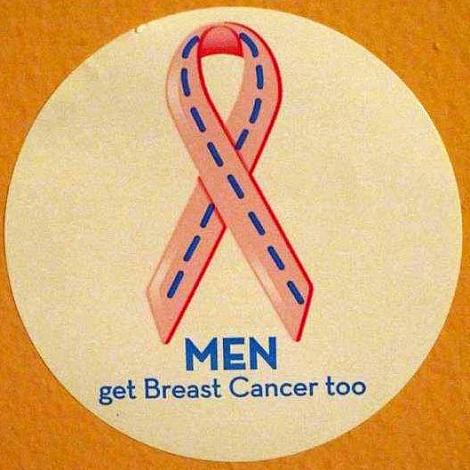 To all those Gentlemen out there!
To all those Gentlemen out there!
Breast cancer is often thought of as a condition that only affects women, but men can also develop it although, breast cancer in men is much less common than breast cancer in women, BUT in the month of total dedication to breast cancer we shouldn’t forget all those men out there who suffer from this deadly disease every year.
So, how can men develop BREAST cancer, when they’ve got no breasts?
The cancer develops in the small amount of breast tissue men have behind their nipples. However, it is important to note that the vast majority of breast lumps are due to a condition called gynaecomastia. This is a common, non-cancerous condition where male breast tissue becomes enlarged.
*Breast cancer in men can also cause nipple problems, such as the nipple turning in on itself (retraction) or nipple discharge.
Causes
There is no known single cause of breast cancer in men. However, there are some factors that might increase the risk:
- getting older – men who get breast cancer are usually over 60
- exposure to radiation – previous radiotherapy treatment can slightly increase risk
- obesity – more significant in men over the age of 35
- significant family history – close relatives with a history of breast cancer at a young age – Hereditary breast cancer is caused by an altered (mutated) gene. So far only a few genes have been identified that, if they are altered, can result in an increased risk of developing breast cancer. The gene that is most commonly associated with breast cancer in men is known as BRCA2 (the gene BRCA1 is less so). An alteration in these genes can be passed on to both male and female children.
- higher than normal oestrogen levels – as a result of long term liver damage and other conditions
- Kleinfelter’s syndrome – a very rare hereditary condition that can increase the risk of breast cancer in men.
*Breast cancer is much rarer in men than women. Only about 1 in 1000 men develop breast cancer in their lifetime.
Symptoms
The earlier breast cancer is treated the better, so it is important to get any symptoms checked out as soon as possible. Possible symptoms include:
- a lump around the nipple or any other area of the breast
- nipple discharge (may be bloodstained)
- tender or drawn in nipple
- ulceration or swelling of the breast
- swelling under the arm.
How are men’s breasts different from women?
Many people are unaware that men can develop breast cancer because they do not think of men as having breasts. In fact, both men and women have breast tissue. Until boys reach their teenage years (and puberty) their breast tissue is the same as girls’. On reaching puberty, however, increased hormone levels affect further development of breast tissue.In girls, the hormone oestrogen causes the breasts to grow and lobules (milk-producing glands) to form at the end of the ducts (small branching tubes behind the nipple). When a woman is breastfeeding, these ducts carry milk to the nipples.
In boys, much higher testosterone levels will eventually stop oestrogen from having any further effect on breast tissue. The lobules are then unable to grow. The small number of ducts stay as they were and the breasts usually flatten out.
Diagnosis
These techniques will usually include one or more of the following:
• a mammogram (breast x-ray)
• an ultrasound scan
• a fine needle aspiration (FNA)
• a core biopsy.
Not everyone will require an FNA or core biopsy. This will depend on your symptoms and the findings of the radiological imaging
(mammogram/ultrasound). A clinical examination, radiological imaging and FNA/core biopsy of the breast is known as a triple assessment.
Positive Results
If your results show that you have breast cancer you may feel all sorts of emotions such as shock, fear, disbelief, anger and helplessness. You may find it hard to take in or believe what you are being told. Having someone with you who can listen carefully or ask questions can be very helpful.
In most cases, surgery is used to remove the cancer along with a section of the breast. This is usually followed by a long-term course of hormone therapy using a medication called tamoxifen.
Tamoxifen helps to block the effects of hormones on breast tissue that are known to stimulate the growth of cancerous cells. It should help prevent the cancer from returning.
In some cases, radiotherapy or chemotherapy may be used for the same purpose.
The outlook for breast cancer is less good in men than in women. This is because there is reduced awareness of the condition and it may take longer to diagnose.
The survival rates for breast cancer in men largely depend on how far the cancer has spread before it is diagnosed. Breast cancer diagnosed at an early stage can often be treated successfully, but effective treatment is more difficult if the cancer has spread beyond the breast tissue.
Unfortunately, many cases are diagnosed after the cancer has already started to spread.
Source: Breast Cancer Care and NHS




